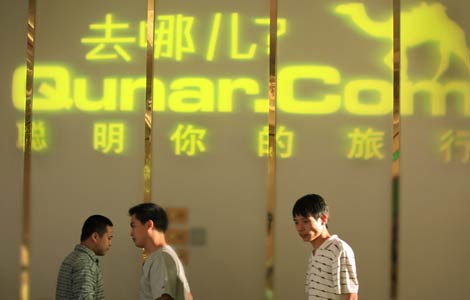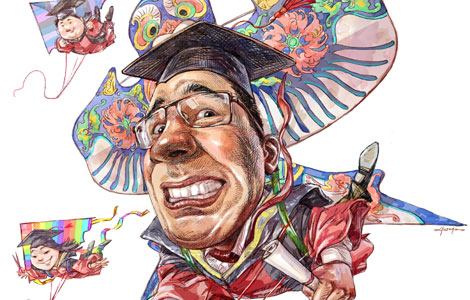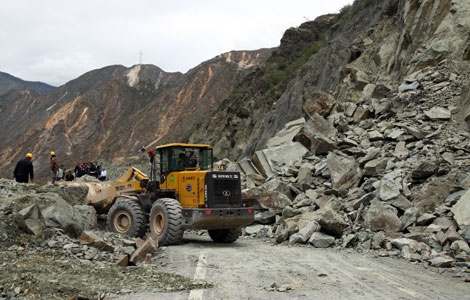Driving the global road
Updated: 2013-11-01 11:59
By Michael Barris (China Daily USA)
|
||||||||
Auto parts
China's exports of auto parts increased to more than $69 billion in 2011 from $7.4 billion in 2002, a ninefold increase. According to US government data, about 25 percent of China's auto parts production is exported, including to the US, where more than $14 billion in parts from China were imported in 2012, a 60 percent increase since 2008.
The Economic Policy Institute, a Washington think tank close to the US labor movement, estimates that there were more than 10,000 registered auto-parts companies in 2008 in China - more than double the 2002 number - and additional 15,000 nonregistered companies that had some portion of their business in auto parts. By contrast, about 5,600 parts suppliers operate in the US.
Foreign investment is seen as bolstering the sector. The Chinese government does not have the same restrictions on investment in the auto-parts sector as in auto assembly, so foreign auto-parts companies can own more than 50 percent of a Chinese parts maker. Seven of China's 10 largest parts makers are foreign-based, according to a 2010 analysis by the APCO Worldwide consulting firm.
Chinese companies' acquisitions of foreign parts makers also are seen as boosting the nation's parts industry. For instance, Pacific Century Motors, a joint venture between the Beijing municipal government and another Chinese partner, in 2010 bought Nexteer Automotive from General Motors Co, for a reported $450 million - the largest Chinese acquisition of a US auto-parts company.
In another move, Beijing West Industries, a joint venture of two Chinese state-owned enterprises, bought the suspension and brake units of Delphi Corp in 2009 for about $100 million as Delphi was emerging from bankruptcy and shedding assets.
These moves were seen as helping Chinese parts makers target technology and product innovations to enhance their Chinese operations.
Acquisitions also may help Chinese companies to develop the expertise to shift from supplying low-margin parts to more profitable activities, such as integrating parts into component systems.
The knowledge that is flowing to China from these moves could be used to design a car that could someday compete in the US market, observers say.
That would mark the achievement of an idea that developed substantially in the 1980s, after Deng Xiaoping came to power and moved China toward economic development. China's Seventh Five-Year Plan in 1986 designated its auto manufacturing sector as a "pillar industry".
Even though the automotive industry has always been viewed as a strategically crucial sector to move China into the modern industrial age - going back to its beginnings in 1953 under the guidance of the Chinese Communist Party Central Committee with assistance from the former Soviet Union - it took Deng to bring life to the idea of using the automotive industry to raise China to a new level of global respect and influence, as Orville Schell and John Delury observe in their book, Wealth and Power: China's Long March to the 21st Century.
Major priority
As China's vehicle-ownership rate rose, output soared. From the late 1990s to 2008, annual vehicle output increased to 9.5 million from less than 2 million. In 2009, in a milestone achievement, China overtook the US as the world's largest motor vehicle producer and seller. By 2020, it is expected to report more than 30 million vehicle sales, up from 19 million last year.
The Chinese government has made the development of its automotive and auto parts industries including energy efficient vehicles a major economic priority, and has implemented a number of industrial policies to promote and protect Chinese auto firms with "the long term goal of making them globally competitive," according to an August Congressional Research Service report.
Consequently the auto trade has become a "source of conflict" between the US and China. That was particularly evident in 2012, when the administration of President Barack Obama asked the World Trade Organization to consider whether alleged Chinese subsidies of auto and auto parts manufacturers violated international rules.
But that intervention is unlikely to stem China's rapidly growing demand for motor vehicles. Its population of 1.3 billion "is just beginning" to have the financial resources to buy automobiles, according to the Congressional Research Service.
China's large internal demand may well shape the industry "for years" with exporting a secondary interest, the report concludes. Making and selling vehicles in the US would cap off the Chinese automotive industry's 30-year-long effort to develop globally.
Jerry Xu, president of the Detroit Chinese Business Association, a nonprofit business network that fosters bilateral business relationships between US and Chinese companies, says the day of China making and selling cars in the US could happen.
"China is not the first group to come here to do business," Xu said. "There's Korean, Japanese, there's German.
"As long as you have good quality, and service, the American market is open for you."
But the Chinese firms "have to better themselves. They have to make sure they provide value to get business market share here," he said. "They have to continue to prove themselves, make sure they have a long-term plan to grow here. To be successful, they have to make themselves a citizen of their community."
Contact the writer at michaelbarris@chinadailyusa.com
(China Daily USA 11/01/2013 page20)

 New road links remote Tibet county to rest of the country
New road links remote Tibet county to rest of the country
 Tan Dun premieres new work with Philadelphia Orchestra
Tan Dun premieres new work with Philadelphia Orchestra
 Two firms to debut in US at higher prices
Two firms to debut in US at higher prices
 Women fight to become China's next oceanauts
Women fight to become China's next oceanauts History under a new light
History under a new light
 Kung fu master becomes hit online
Kung fu master becomes hit online
 Color-blind love
Color-blind love
 Lenovo's new secret weapon: Hollywood star
Lenovo's new secret weapon: Hollywood star
Most Viewed
Editor's Picks

|

|

|

|

|

|
Today's Top News
China securitization plan to include foreign banks
Firms heading home as benefits wane in China
China's PMI growth hits 18-month high
China 'urges' US to explain phone taps
Obama: US is open for business
US students compete in Chinese
China condemns Japan's 'dangerous provocation'
Freer RMB 'can answer US claims'
US Weekly

|

|






